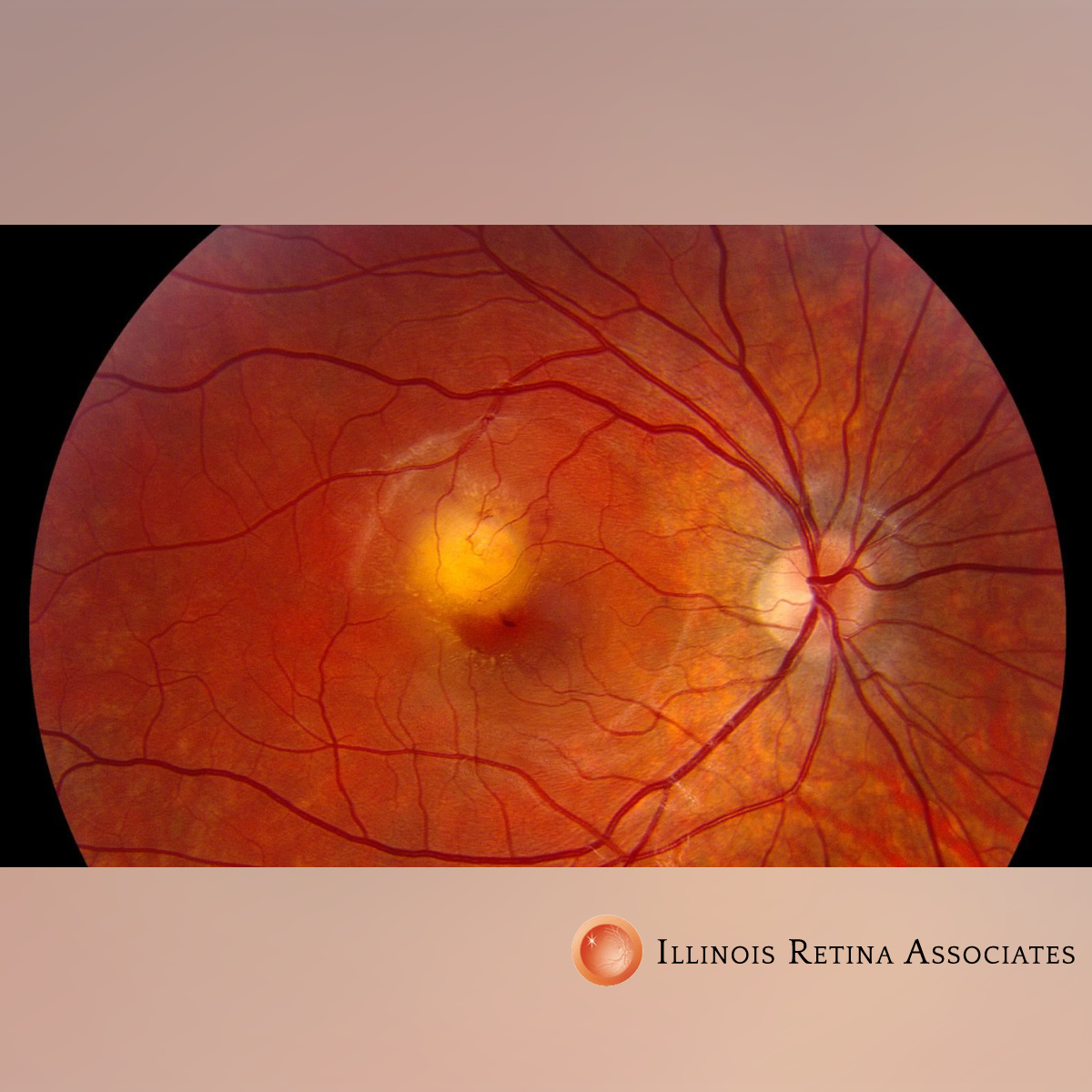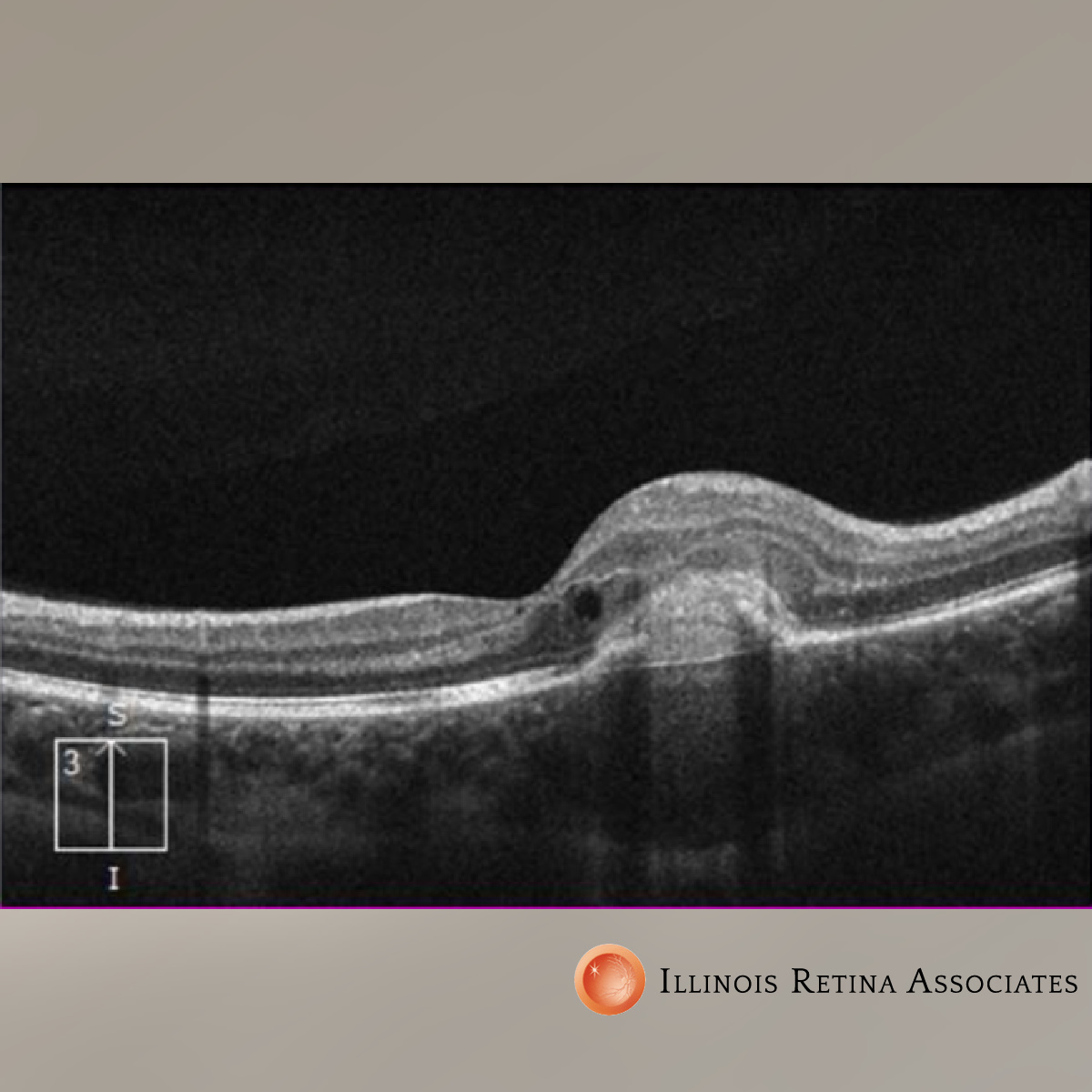Focal Scleral Nodule – March, 2024

History:
A 16-year-old female presented as second opinion with decreased vision in the right eye (OD) for one week. She has no significant family or medical history and took no medications. She was myopic and wore correction.
Exam:
Visual acuity was 20/40 and 20/20. Intraocular pressure (IOP) was 19 and 14. Anterior exam was normal with no corneal or lenticular changes. Dilated exam of the right eye (OD) showed a circular yellowish lesion of one disc diameter in size just superonasal to the fovea. There were also multiple flecks of hemorrhage surrounding the lesion as well as a ring of subretinal fluid (Fig 1). Of note, her fundus did not appear obviously myopic. The periphery was normal with no lacquer cracks or histoplasmosis spots. Fundus exam of the left eye (OS) was unremarkable.

Optical coherence tomography (OCT) of the macula showed intraretinal fluid and hyper-reflective material below the retina and below the retinal pigment epithelium (RPE) concerning for active choroidal neovascular membrane (Fig 2).

Differential Diagnosis:
• Myopic CNV
• Choroidal metastasis
• Amelanotic choroidal melanoma
• Astrocytic hamartoma
• Ocular tuberculosis
• Best disease
• Focal scleral nodule
Discussion:
Focal Scleral Nodule
Focal scleral nodules, also known as unifocal heloid choroiditis, are benign lesions that are located within the sclera. They are white or yellow, slightly elevated, round, and tend to have a golden or orange halo surrounding the nodule. Most lesions are posterior to the equator and tend to be near the optic nerve. In our patient’s OCT, you can note the large nodule in the choroidal space.
Our patient’s development of choroidal neovascular membrane is uncommon. After treatment with full fluence PDT and anti-VEGF treatments, she developed RPE atrophy but remains stable. Due to the benign nature of focal scleral nodules, most nodules can be observed and do not require treatment. It is crucial to rule out malignancy since benign focal scleral nodules can appear quite like metastatic lesions.
If you are looking to schedule your first consultation, please contact us today by clicking HERE and find the location that is nearest you!
References:
- Hong PH, Jampol LM, Dodwell DG, Hrisomalos NF, Lyon AT. Unifocal helioid choroiditis. Arch Ophthalmol. 1997 Aug;115(8):1007-13.
- Shields JA, Shields CL, Demirci H, Hanovar S. Solitary Idiopathic Choroiditis: The Richard B. Weaver Lecture. Arch Ophthalmol. 2002;120(3):311–319.

